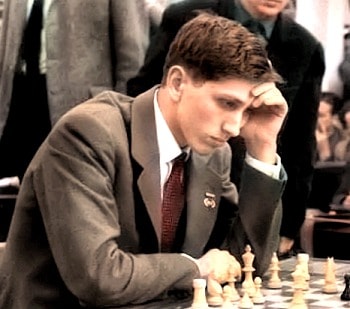Top Ten Chess Players of All Time & Their Opening Moves
Everyone loves to speculate as to who was the best ever. I’ll share my opinion, but I’ve put little spin on it this time. I’ll share who I think the Top Ten Chess Players of All Time were, but I’m also going to survey their opening repertoires and see what we can learn about them.
In creating my list, I did review a few other lists, including ones that used statistics to create ELO ratings for the players of previous generations. Also, I looked at the opinions of several masters for their top picks.
I looked for some consensus. For example, most lists placed Kasparov, Fischer, and Capablanca in their top three, although in various orders. However, after that there was no other trends that I could decipher other than the recurrence of the other players on my list.
There were a few notable players left off the list. Several non-world champions, Paul Morphy, Aaron Nimzowitch, Akiba Rubinstein, David Bronstein, and Viktor Korchnoi, who appear in other top ten lists didn’t make it onto this list. Mikhail Tal was on earlier versions of my list before I finalized it. Another world champion who didn’t make it onto the list was Max Euwe, who would definitely be on a top 15 list.
Finally, I left off currently active players such as Vishy Anand, Vladimir Kramnik, and Magnus Carlsen. Their chess careers have yet to conclude and I felt it would be difficult to place them among the legends on my current list.
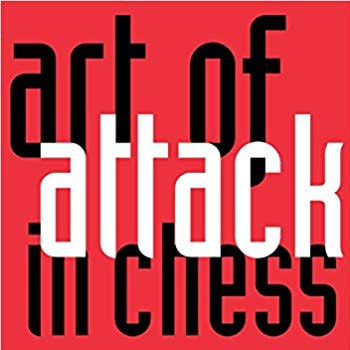
Opening Observations
I found the process of mapping out the top ten players’ repertoires both fascinating and challenging. There are a few reasons for this and to cut down on the length of this article I had to make some choices as to what to include.
First is the matter of style. We can use Petrosian as an example. Although he was primarily known as a positional defensive player, he was fairly comfortable playing the sharp and tactical Sicilian Najdorf as black – scoring quite well with it in fact. I noticed this as well with players who were primarily known as attacking or tactical players such as Garry Kasparov or Boris Spassky – they could play “quiet” openings quite well also.
The fact is that these top players know chess very well. Although they may have proclivities toward a particular style of play, their overall understanding of the game allows them to play opening systems that are against that “style.” Also, over time certain openings such as the Najdorf Sicilian have proven themselves to be quite effective and combative weapons and offered these legendary players the opportunity to find creative challenges for their opponents – and thus the best players will play them.
Similarly, the players of this group often played openings to counter specific opponents. For example, Garry Kasparov primarily played the Scheveningen and Najdorf variations of the Sicilian Defense during the years he was world champion. However, for psychological and gamesmanship reasons, he played the Sicilian Dragon in his 1995 World Championship match against Vishy Anand – who himself was a proponent of the Sicilian Dragon. You can see Kasparov’s Sicilian Dragon game in my previous blog post.
Because of these reasons, I chose to narrow down my survey of their opening weapons. First, I looked at their openings during their peak years – typically the years they were world champion plus a few years before and after. Secondly, I tried to identify the openings that they played most often as well as the opening variations they chose in their most important matches – e.g. the world championship.
Ranking The Top 10 Ten Chess Players of All Time
I hope you find my list both entertaining and informative. Let’s start with #10 and count down.
#10 Tigran Petrosian
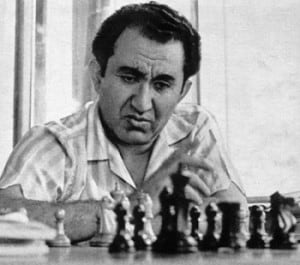
Tigran Petrosian – the 9th World Champion – is known as a defensive player who was a master of prophylaxis – the preventing of the opponent’s threats and ideas. Like many positional players at this level, his endgame play was exemplary. His chess style involved little risk and his record demonstrates this as Petrosian seldom lost.
Petrosian’s main opening moves with White were 1.d4 and 1.c4, usually leading to closed positional games. Against 1…Nf6 Petrosian played 2.c4 and against 2…e6 played both 3.Nc3 (allowing the Nimzo-Indian) and 3.Nf3 (denying the Nimzo-Indian. Against the Queen’s Indian Defense he often played the Spassky system (1. d4 Nf6 2. c4 e6 3. Nf3 b6 4. e3). When he allowed the Nimzo, he most often played the 4.e3 system (aka the Normal Variation: 1. d4 Nf6 2. c4 e6 3. Nc3 Bb4 4. e3 O-O. When facing 1…d5 he usually played 2.c4 and against the Queen’s Gambit Declined continued with 3.Nf3 and 4.Bg5.
With the Black pieces, when his opponent’s played 1.e4, he most often responded with 1…e6 2.d4 d5 (the French Defense). When White played 3.Nc3 Petrosian played 3…Bb4 (the Winawer). This is a combative system and play combines both positional and tactical play with the center usually locked. Against 1.d4, Petrosian often aimed for the Nimzo-Indian after 1…Nf6 2.c4 e6 3.Nc3 Bb4. When his opponent played 3.Nf3 (preventing the Nimzo), he played both the Bogo Indian (1.d4 Nf6 2.c4 e6 3.Nf3 Bb4+) and the Queen’s Indian (1.d4 Nf6 2.c4 e6 3.Nf3 b6).
As an example of Petrosian’s play, I present a game from his second world championship match against Boris Spassky. Playing the Queen’s Indian, Petrosian demonstrates several of his strengths – his positional use of the Exchange Sacrifice, his exploitation of small positional mistakes by his opponent, and his incredible endgame play.
#9 Boris Spassky
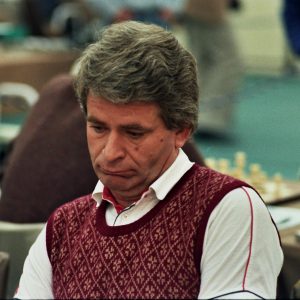
Boris Spassky – the 10th World Champion – is often referred to as a “universal” player – comfortable in both attack and defense and in all phases of the game. Indeed, Spassky was adept at all aspects of the game, but as I play through and studied a few of his games, I observed his particular talent for aggressive attacking play.
With the White pieces, Boris Spassky was creative – using different openings even if they were not considered particularly strong. He opened primarily with 1.e4 in congruence with his strong tactical skills and aggressive play. Against the Sicilian, which he faced most often during his peak years, he usually played the Open Sicilian (1.e4 c5 2.Nf3), but has quite a few games where he played the Closed Sicilian (1.e4 c5 2.Nc3 Nc6 3.g3) as well. Against 1…e5, he played 2.Nf3 aiming for the Ruy Lopez. However, he also has trotted out the King’s Gambit (1.e4 e5 2.f4) quite a few times. Creativity and variety is a good way to describe Spassky’s play with the White pieces.
With Black, Spassky seemed to depend on just a few solid weapons. Against 1.e4, he most often replied with 1…e5 and when faced with the Spanish, he almost always replied with the Breyer Defense (1 e4 e5 2 Nf3 Nc6 3 Bb5 a6 4 Ba4 Nf6 5 O-O Be7 6 Re1 b5 7 Bb3 O-O 8 c3 d6 9 h3 Nb8). Against 1.d4 and 1.c4, he usually played 1…Nf6 and 2…e6, either playing the Nimzo-Indian Defense or transposing into the Queen’s Gambit Declined.
In the following game, Spassky demonstrates his skill in attack in the Closed Sicilian. Spassky’s deep tactical insight into the positions allow him to make multiple sacrifices to get at Black’s king.
#8 Emanuel Lasker
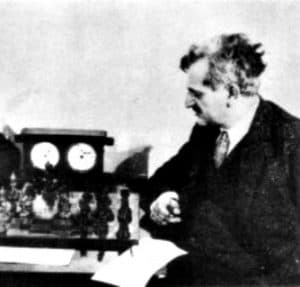
Emanuel Lasker – the 2nd World Champion – is most well-known for his psychological approach to the game. He made moves not only because of their objective worth, but also because of the effect they would have on his opponents. Lasker was one of the pioneers of chess strategy and was good at all aspects of the game. However, he is best known for his defensive technique as well as incredible endgame skill.
Lasker almost always played 1.e4 and his opponents almost always responded with 1…e5 and Lasker usually headed towards the Ruy Lopez. He often played what are now known the classical variations against the French and Caro-Kann with 3.Nc3. Although the Sicilian was not played as much in the late 19th and 20th centuries, he faced it a few times and almost always responded with the Open Sicilian (2.Nf3 followed by 3.d4).
With the Black pieces, Lasker played a fairly narrow repertoire. Against 1.e4 he played 1…e5 and against the Ruy Lopez he most often chose the Berlin Defense (1.e4 e5 2.Nf3 Nc6 3.Bb5 Nf6). When his opponents played 3.Bc4 (the Italian Game), Lasker played the classical Italian (3…Bc5) while later he switched to the Two Knights Defense (3…Nf6). Against 1.d4, he most often chose 1…d5 and the Queen’s Gambit Declined. Although he orginated the Lasker Variation (where Black plays the freeing move …Ne4) in the QGD, he more often chose the Orthodox Variation (1.d4 d5 2.c4 e6 3.Nc3 Nf6 4.Bg5 Be7 5.e3 O-O 6.Nf3 Nbd7) during his career. These defenses often lead into rich and complex endgames, which Lasker excelled in.
The following game displays both Lasker’s psychological approach to the opening as well as his incredible technique. This is considered one of Lasker’s best games and it’s also one of my favorites and I’ve annotated it with analysis from various sources.
#7 Vasily Smyslov
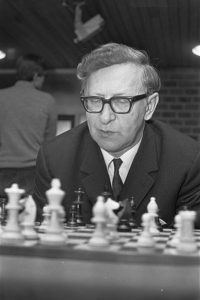
Smyslov was the 7th World Champion. He had an incredibly long competitive chess career spanning from 1940 when he participated in the Soviet Chess Championship and ending in the early 2000’s, when he had a FIDE rating over 2400 at over 80-years-old. He was known for his positional prowess and exceptional endgame skill. He contributed much to opening theory, including the English, Gruenfeld, and Sicilian.
Categorizing Smyslov’s opening repertoire with White is difficult as he played 1.e4 and 1.d4 almost equally and also had a significant number of games with 1.c4. In looking at his openings over time, I did notice that 1.c4 and 1.d4 were more prevalent after 1960 while 1.e4 was played more frequently by comparison earlier in his career. However, that being said, Smyslov employed a few interesting weapons with the white pieces, including the Closed Sicilian and the King’s Indian Attack – in particular a variation now known as the Smyslov Variation (1.Nf3 Nf6 2.g3 g6 3.b4).
Smyslov depended on a few pet systems with the Black pieces. Against 1.e4 he responded with 1…e5 primarily and was defended the Ruy Lopez with various systems, but often used what has come to be known as the Smyslov Defense (1. e4 e5 2. Nf3 Nc6 3. Bb5 a6 4.Ba4 Nf6 5. O-O Be7 6. Re1 b5 7.Bb3 O-O 8. c3 d6 9. h3 h6). Although he faced the Italian (1.e4 e5 2.Nf3 Nc6 3.Bc4) rarely, he used the Hungarian Defense almost exclusively against it (3…Be7). Against 1.d4 Smyslov played 1…Nf6 aiming for the Nimzo-Indian Defense, and played the Bogo-Indian and Queen’s Indian almost equally when denied the Nimzo.
The game I chose to demonstrate Smyslov’s style is a battle from the 1945 USSR Championship. In this game, Smyslov shows how he can take one positional element – the d5 square – and exploit it – transforming it into a winning attack. Although known for his positional and endgame prowess, he was also capable of brilliant flowing attacks.
#6 Alexander Alekhine
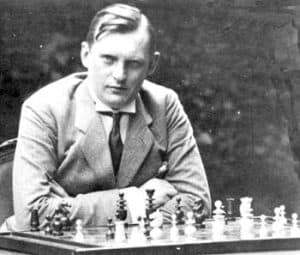
Alexander Alekhine was the 4th World Champion, defeating Capablanca in 1927. Alekhine was known as an incredible tactician and attacker. His play is characterized by an increase in complexity and tension as compared to the clear positional style of Capablanca. He was known as a tireless analyst and his chess openings contributions were numerous.
Although Alekhine played 1.e4 frequently, he more often preferred 1.d4. He most often faced 1…Nf6 and after 2.c4 e6 3.Nc3 his opponents often transposed to the Queen’s Gambit Declined, where Alekhine often played for what is now known as the Alekhine variation of the Orthodox QGD (1. d4 d5 2. c4 e6 3. Nc3 Nf6 4.Bg5 Be7 5. e3 O-O 6. Nf3 Nbd7 7.Rc1 c6 8. Bd3 dxc4 9. Bxc4 Nd5 10.Bxe7 Qxe7 11. Ne4). Against the Nimzo, he played the Classical variation (4.Qc2).
With the Black pieces, Alekhine played the Nimzo-Indian Defense at every opportunity against 1.d4. When he wasn’t allowed the NImzo, he often played the Queen’s Indian Defense. Against 1.e4 he often played 1…e5 and often headed towards the closed variations of the Ruy Lopez. Against 1.e4 he is also known for Alekhine’s Defense (1.e4 Nf6), although he played this much less frequently.
In the following game, Alekhine demonstrates the dynamic potential of the isolated d-pawn in the Black side of the Nimzo-Indian Defense. He uses converts it into a material advantage and uses his edge to win in the endgame.
#5 Mikhail Botvinnik
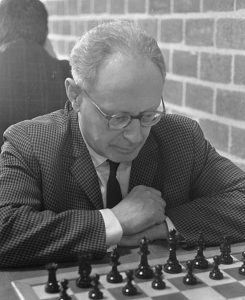
Mikhail Botvinnik won the World Championship three different times and was near the top of the chess world for 30 years. He was a pioneer in systematic training, incorporating psychological and physical training to supplement his chess training. He also founded a school of chess in the Soviet Union, which boasted such graduates as Anatoly Karpov and Garry Kasparov. As a player, he enjoyed complex positions. He was a master of deep plans and used his tactical skill to support those plans. He contributed much to some of the most complex opening systems, including the Semi-Slav as well as the several variations within the Caro-Kann with both the White and Black pieces.
Botvinnik preferred closed positions where he could build his deep plans, so he most often opened with 1.d4 and secondarily with 1.c4. Against the Nimzo-Indian he played 4.e3 (the Normal variation). When facing the King’s Indian Defense, he usually employed the Samisch Variation (1.d4 Nf6 2.c4 g6 3.Nc3 Bg7 4.e4 d6 5.f3). Against the Gruenfeld he played what is known as the Russian Variation (1. d4 Nf6 2. c4 g6 3. Nc3 d5 4. Nf3 Bg7 5. Qb3 ).
With the Black pieces, Botvinnik played many systems. Against 1.e4, he played the Sicilian, the Caro-Kann, as well as 1…e5. However, he most often chose the French Defense (1.e4 e6 2.d4 d5) and when allowed, mainly played the Winawer Defense (3.Nc3 Bb4). Against 1.d4, he mainly played 1…Nf6 usually headed towards the Nimzo-Indian Defense, but also played quite a few Gruenfeld games as well. Besides 1..Nf6, Botvinnik on occasion employed the Dutch Defense as well against 1.d4.
The following game shows Botvinnik’s combination of calculation and positional understanding. Creating wonderful outposts for his knight and then using an exchange sacrifice to eliminate a key defender, Botvinnik weaves a web around his opponent’s king. Except where noted, I adapted comments made by Alexander Alekhine.
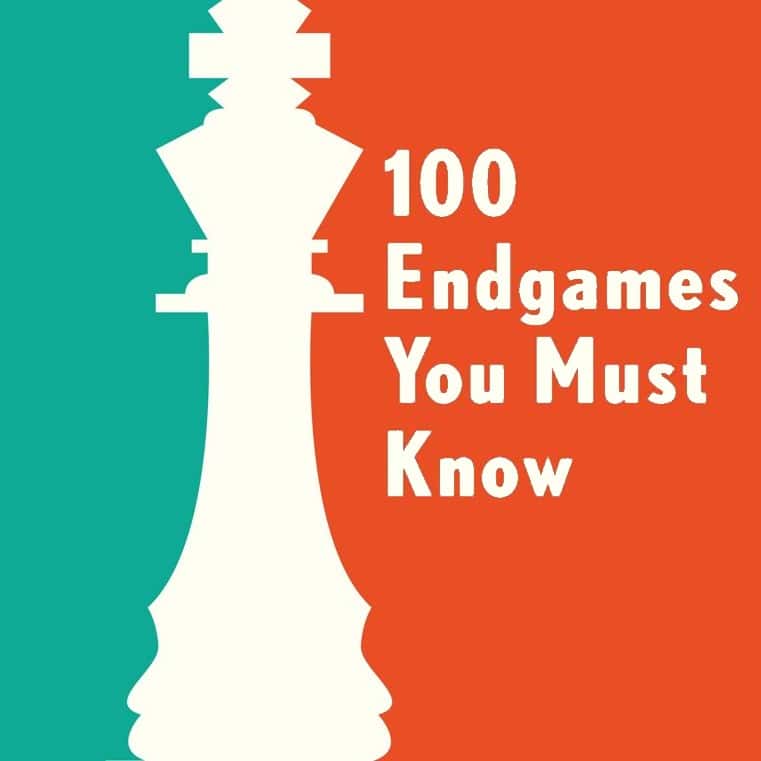
#4 Anatoly Karpov
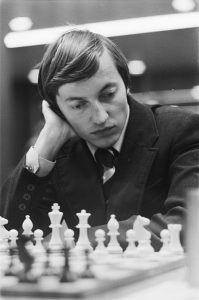
Anatoly Karpov won the World Championship in 1975 when Bobby Fischer failed to defend his title. Eager to prove his worthiness as champion, Karpov dominated nearly every major tournament he played in for several years including defending his title several times successfully before his epic rivalry with Garry Kasparov. Karpov is best known for his ability to sense and exploit slight positional advantages. As we’ve noticed with many positional players on this list, Karpov is also excellent in the endgame.
Although Karpov primarily played 1.d4 with White, he was extremely successful with 1.e4 as well. With 1.d4 he rarely allowed the Nimzo, and scored heavily with White against the Queen’s Indian Defense. Against the King’s Indian, his primary weapon was the Samisch Variation. When facing the Gruenfeld, he preferred the Exchange Variation. Against 1.d4 d5 he played 2.c4 (the Queen’s Gambit).
With the Black pieces, Karpov employed a few handy weapons. Against 1.e4 he played both 1…e5 aiming for the closed Ruy Lopez – usually relying on the Flohr system (1. e4 e5 2. Nf3 Nc6 3. Bb5 a6 4. Ba4 Nf6 5. O-O Be7 6. Re1 b5 7. Bb3 O-O 8. c3 d6 9. h3 Bb7 ) – and the Caro-Kann for which he is well known for the aptly named Karpov variation (1. e4 c6 2. d4 d5 3. Nc3 dxe4 4. Nxe4 Nd7 ). Against 1.d4 he most often utilized the Nimzo-Indian and Queen’s Indian Defenses. When he occasionally played 1…d5 he employed the Tartakower variation of the Queen’s Gambit Declined (1. d4 d5 2. c4 e6 3. Nc3 Nf6 4. Bg5 Be7 5. e3 O-O 6. Nf3 h6 7. Bh4 b6).
Although Karpov was known as a positional player, this does not mean he was uncomfortable in sharp complicated positions. In the following game, he demonstrates one of his main weapons against the Sicilian – the Keres Attack.
#3 Jose Raul Capablanca
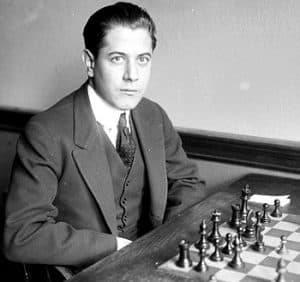
Capablanca – the 3rd World Champion – was a prodigy at chess. He had a clear positional style and is considered one of the best endgame players ever. He excelled at neutralizing his opponent’s counterplay and simplifying into a winning or slightly adventageous endgame and simply outplaying his opponent from that point onward. His opening systems were not very complex and he was not known for sharp opening play, but I suppose one doesn’t need sharp openings when you rarely make a mistake in the middlegame or endgame.
Capablanca’s repertoire is fairly straightforward. Although he played 1.e4 he preferred 1.d4. He played the Queen’s Gambit against 1…d5. When he played against 1…Nf6, most of his opponents either transposed back into the Queen’s Gambit Declined via 2…e6 and 3…d5 or played the NImzo-Indian Defense. Against the Nimzo, Capablanca pioneered what is now known as the Classical Variation (1. d4 Nf6 2. c4 e6 3. Nc3 Bb4 4. Qc2) although it is also called the Capablanca Variation.
Capablanca’s repertoire with Black was also fairly narrow. Against 1.d4 he often opened with 1…Nf6 but almost always transposed into the Queen’s Gambit Declined, often employing the solid Orthodox Variation (1. d4 d5 2. c4 e6 3. Nc3 Nf6 4. Bg5 Be7 5. e3 O-O 6. Nf3 Nbd7 7. Rc1 c6 ). When his opponents played 1.e4 he played 1…e5 most of the time and played various systems against the Ruy Lopez depending on what his opponents played. His opponents also played the Four Knights against him quite a few times, and he almost always responded with the Symmetrical Defense (1. e4 e5 2. Nf3 Nc6 3. Nc3 Nf6 4. Bb5 Bb4 5. O-O O-O 6. d3 d6 ).
I chose the following game for Capablanca as it was one in which one of his moves were criticized by other masters of his era being “anti-positional.” However, Capablanca did not blindly follow general positional principles. Instead, he instinctually found the right move for the position. This game also illustrates one of Capa’s characteristic “little combinations” which he concludes the game with.
#2 Bobby Fischer
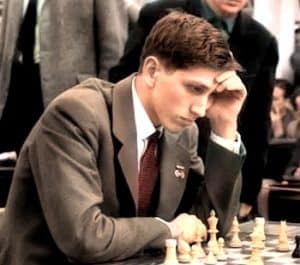
Bobby Fischer was the 11th World Champion – defeating Boris Spassky in 1972 to capture the title. Although controversial throughout his life and ending his career abruptly, Fischer’s star shone most brightly when he was at the top. His style is hard to classify, as he excelled in all phases of the game with no apparent weaknesses. His opening repertoire was narrow, but his preparation was deep. He played both complex and simple positions accurately. He is also considered one of the greatest endgame players. When playing over and studying his games, Fischer’s play exudes a fundamental “correctness” that is beautiful to observe.
Bobby Fischer’s opening repertoire is fairly straightforward as he kept a very narrow repertoire (although he demonstrated that he could play other openings well when he deviated). With the White pieces, he almost exclusively played 1.e4 and played most of the main lines against most of Black’s replies. Exceptions include the Exchange Ruy Lopez (1.e4 e5 2.Nf3 Nc6 3.Bb5 a6 4.Bxc6), which he turned into a formidable weapon and the Sozin-Fischer Attack in the Sicilian (1. e4 c5 2. Nf3 d6 3. d4 cxd4 4. Nxd4 Nf6 5. Nc3 e6 6. Bc4 Nc6).
Fischer’s Black repertoire was equally narrow. Against 1.e4 he played the Sicilian – focusing mainly on the Najdorf and often playing the Poisoned Pawn variation (1. e4 c5 2. Nf3 d6 3. d4 cxd4 4. Nxd4 Nf6 5. Nc3 a6 6. Bg5 e6 7. f4 Qb6). Against 1.d4 he played the King’s Indian Defense almost exclusively, although he started playing the Gruenfeld more towards the end of his career as well.
I chose the following game to demonstrate Fischer’s brilliance and clarity of his play. Each move logically follows the other. In this particular game, I include comments by Fischer and others (whom I credit in the annotations).
#1 Garry Kasparov
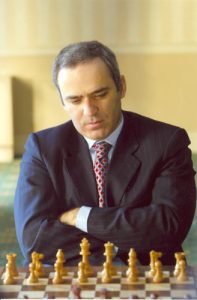
Garry Kasparov was the 13th World Champion. His long-term dominance in both matchplay and tournament play is unmatched – holding the world championship for 15 years as well as the number one ranking for nearly the same amount of time. A student of the Botvinnik school of chess – he brought chess preparation into the 21st century with his combination of physical preparation, analytical depth, and the incorporation of computer analysis in his opening preparation. In studying his games and reading his comments to his games and matches, I was particularly impressed by his preparation for specific opponents, which extended past chess preparation into psychological considerations. His opening preparation was considered superior to his contemporaries. Although strong in all areas of the game, he is known for his aggressive tactical style.
With the White pieces, Kasparov played 1.d4 and 1.e4 equally, usually choosing his weapons based on specific preparation against his opponent. He is known for reviving the Scotch Opening (1.e4 e5 2.Nf3 Nc6 3.d4) but most often Ruy Lopez. Kasparov was usually at the vanguard of mainstream openings – and has been described as usually playing to find the most testing moves in every position (as opposed to playing solid but non-threatening options).
With the Black pieces, Kasparov most often played the sharpest, most combative lines. Against 1.e4, he almost always chose the Sicilian Defense, playing the Scheveningen earlier in his career and migrating to the Najdorf. Against 1.d4, he has played a plethora of openings, including the King’s Indian Defense earlier in his career and moving more towards the Gruenfeld and Nimzo-Indian later in his career. He is also very skilled with 1…d5, employing the Queen’s Gambit Declined and Slav defenses throughout his career.
The following game illustrates a couple key aspects of Kasparov’s play. First, Kasparov valued the initiative and quality of the pieces more than material – freely sacrificing pawns and other material to achieve these aims. Second, he avoided simplifying exchanges and preferred to keep tension and dynamic chances within the position. Finally, once he spots an opening in his opponent’s defenses, he is relentless in attack. Enjoy this briliancy against his long-time rival Karpov.
Concluding on History’s Top 10 Chess Players
Looking at the opening repertoires of the Top Ten Players of All Time was very insightful for me. A came away with a few observations.
First, except for perhaps Fischer and Capablanca, the other members of the top ten had fairly wide repertoires. They played a variety of different systems against the major openings with both White and Black. Part of this was due to the fact that they could often prepare specific openings for their opponents during tournaments and matches. Another aspect is that their overall skill at chess allowed them to play what suited them for a particular match-up.
This is in contrast to the typical amateur player who does not study chess full-time and would also be confused by studying too many openings. Amateur players made to well to follow Capablanca’s lead and stick to a narrow repertoire that we can excel in and perhaps add to later.
Second, although most of the players stuck to the most well-known openings for much of their repertoire, there was a wide variety of systems being played overall. This is perhaps due to the fact that they were often at the forefront of opening developments – e.g. they were the leaders, and the other masters followed where they led. Because of this, they were the ones making new developments in these older systems and adding new wrinkles.
For we mere chess mortals, it tells us that we can try out different openings that we find interesting without worrying about playing the “main line.” The mainstream openings are only what the top players of the day are playing – and it doesn’t invalidate the soundness of other openings that are not currently in fashion.
Finally, a word about style. Although in my research I found many characterizations about certain players’ style, I found many examples (some which I shared in this article) where a positional defensive player demonstrates a brilliant attack or the reputed attacker simplifies into a complex endgame.
Remember that chess is a game of interconnected ideas. So you cannot fully separate strategy from tactics, attack from defense, or one phase of a game from another. So you must study your openings with an eye towards the middlegame and study your endgames with consideration from which openings that may arise.
With that in mind, remember to do your daily repetitions with Chessable, and although we may never make it onto a Top Ten list, we can surely improve our game day by day.

